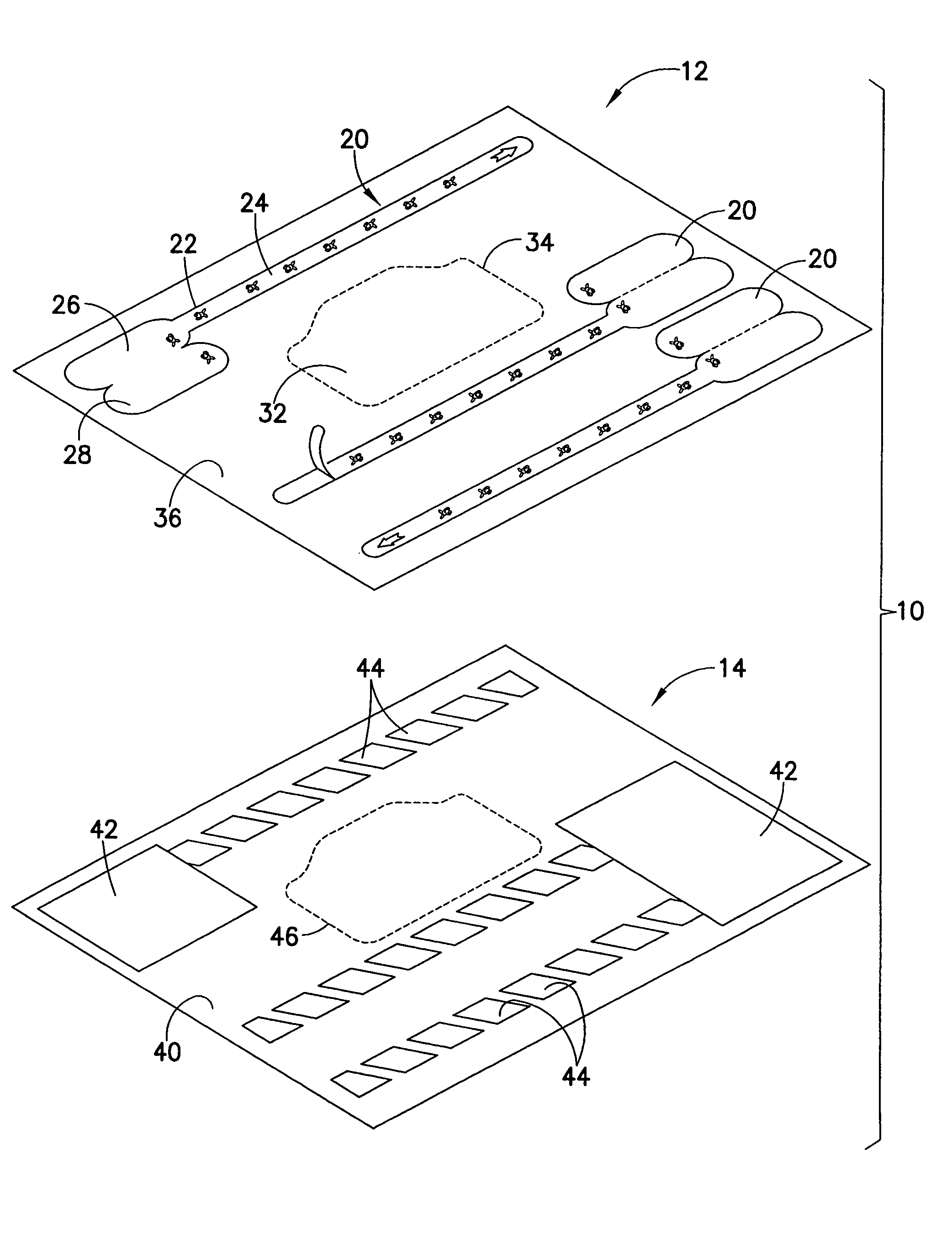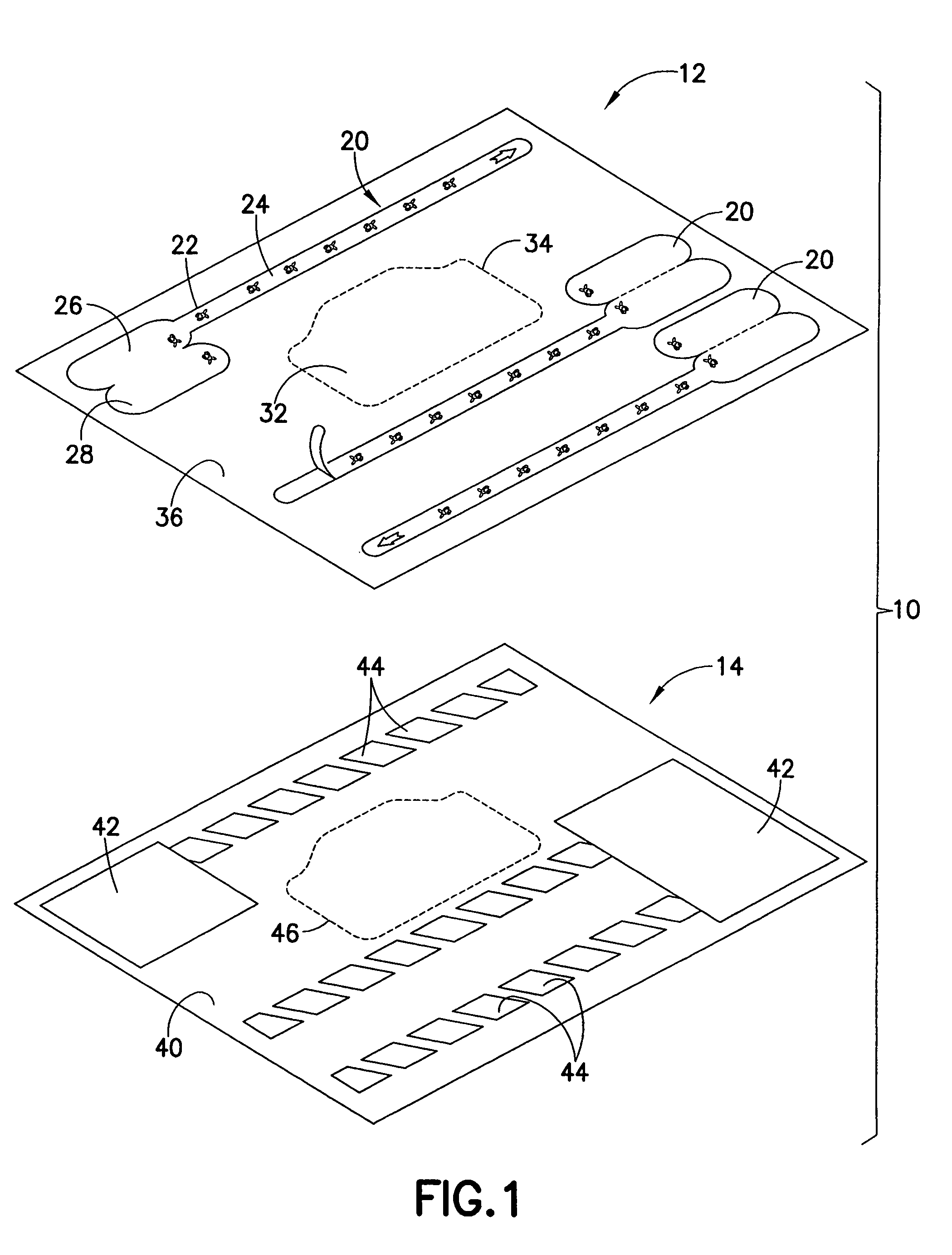Patient identification products
a technology for identification products and patients, applied in the field of patient identification products, can solve the problems of insufficient dimensions of narrow bands for receiving all identification information, and achieve the effect of efficient and reliable printing of identification bands and easy reading
- Summary
- Abstract
- Description
- Claims
- Application Information
AI Technical Summary
Benefits of technology
Problems solved by technology
Method used
Image
Examples
Embodiment Construction
[0038]A sheet assembly in accordance with the subject invention is identified generally by the numeral 10 in FIG. 1. The sheet assembly 10 includes a face sheet 12 and a backing sheet 14. The face sheet 12 is substantially rectangular and preferably is formed from a woven material, such as polyester, that has been impregnated with a compatible filler, such as polyester or nylon. The filler is applied sufficiently to define a relatively smooth continuous surface that will accept and retain printed indicia. The face sheet 12 preferably defines a thickness of about 5 mils.
[0039]A plurality of identification bands 20 are defined on the face sheet 12 by a corresponding plurality of arrays of die cuts 22. The die cut arrays 22 may be die cut, laser cut or otherwise formed to extend through the face sheet 12 at a plurality of spaced apart locations thereon. The specific dimensions of the die cut arrays may vary depending upon the characteristics of the woven material from which the face sh...
PUM
 Login to View More
Login to View More Abstract
Description
Claims
Application Information
 Login to View More
Login to View More - R&D
- Intellectual Property
- Life Sciences
- Materials
- Tech Scout
- Unparalleled Data Quality
- Higher Quality Content
- 60% Fewer Hallucinations
Browse by: Latest US Patents, China's latest patents, Technical Efficacy Thesaurus, Application Domain, Technology Topic, Popular Technical Reports.
© 2025 PatSnap. All rights reserved.Legal|Privacy policy|Modern Slavery Act Transparency Statement|Sitemap|About US| Contact US: help@patsnap.com



